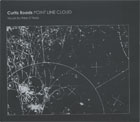
Point Line Cloud 2004
Distributed by Microcinema International/Microcinema DVD, 1636 Bush St., Suite #2, SF, CA 94109; 415-447-9750
Produced by Asphodel Ltd.
Director n/a
DVD, color, DVD-64 min.; CD-43 min.
College - Adult
Music, Film Studies, Media Studies, Art, Performing Arts
Date Entered: 07/03/2007
Reviewed by David J. Bertuca, University at Buffalo, State University of New YorkScience is art. This CD/DVD title is a collection of audiovisual pieces that demonstrate the aesthetics of the physical world. Curtis Roads has spent 30 years experimenting with the “digital synthesis of sound grains” to create works of performance art, produced using acoustical theories based on physics. The resulting audio works are the result of a synthesis of digital sound, in which the composer breaks sounds into their individual “particles” as a physicist breaks down elements into their individual particles. The sounds are stretched and broken down, are created and decay, and expand and contract using a mix of physics and music theories. While being a work of science, Point Line Cloud has been performed in concerts worldwide.
The performances on the two discs are deceptive in that they can be interpreted on several different levels. On one extreme, they are sound and light shows, suitable for entertainment (the main purpose of these compositions is performance art). On the other extreme, they are examples of computer science and digital experimentation to create such performances. To some, this work is audio manipulation; to others, it is computer science in action.
Fortunately for the viewer, the composer/computer scientist has included a booklet of “program notes” plus a series of files on disc explaining the theories and how he developed each of the works. In addition, there is text of an interview with the composer and an audio excerpt from a lecture given at Stanford University. These help viewers to understand the content better. A bibliography is included in the files so that computer science majors and digital musicians can further study this genre.
Audience levels therefore, are varied: adults interested in art and experimental music can enjoy listening to, and watching pieces of performance art; computer and technology people, as well as musicians, can both watch, and study the techniques and programming concepts that went into the production.
In this the production may be good for adult viewers. The product is well-packaged and the contents are described on the case. Additional files on the discs help to further explain what is being viewed. Biographies of the key producers, plus an article on the Origins of Granular Synthesis provide more for the technical enthusiast. This title is recommended for digital musicians and experimenters, who will get the most out of it. It may be of interest to high school through adult art/music lovers.
Awards
- Ars Electronica Award of Distinction, 2002